As we approach the business end of the season, the start of 2024 looks no more promising for Sevilla fans than what they had to endure throughout the previous campaign. This season may arguably come across as even more damning, with the revolving door at the head coach position failing to identify areas of improvement and a clear pathway for future success. At this point in time, one of Spain’s most decorated and historic football clubs desperately needs to rebuild- and fast.
With Sevilla currently sitting only one point above the drop zone, it can be theorised that their UEFA Europa League successes have done an excellent job of masking the waning ability and tactical deficiencies within the squad. Having had as many managers as they have had league wins this campaign, former Atlético Madrid manager Quique Sánchez Flores is tasked with an almighty challenge which would’ve seemed incomprehensible only a short time ago- keeping Sevilla in LaLiga.
This tactical analysis and scout report will begin to address what has gone so wrong at Sevilla, with their tactical instability contributing to troubles in all areas of the pitch. This analysis will address how the tactics and decision-making of Sánchez Flores will begin to right the wrongs of this season, but also how they may remain wary of the dreaded threat of relegation.
Sevilla’s declining squad
When looking at the Sevilla side, you would not be mistaken when highlighting their array of experience and talent when identifying notorious champions like Ivan Rakitić or Jesús Navas. We must not forget that this side was victorious in the Europa League final only eight months ago, displaying their continental prowess and taking home silverware in the most high-pressured moment of the season. The incredible downturn in form and league position can possibly be attributed to the state of their squad, filled with high-profile ageing stars who lack the mobility and athleticism to cope with their competitors.
Earlier in the season, when facing PSV, Sevilla fielded the oldest average starting eleven in UEFA Champions League history at an average age of 32 years and 19 days. Along with replicating such records in LaLiga this term (31 years & 127 days), this is indicative of Sevilla’s reluctance to target youthful prospects who can grow into the side and begin to make a meaningful contribution.
The return of academy graduate Sergio Ramos was romanticised in the summer window, with the Spanish star representing a clear leader to ignite a fresh charge back towards the top. But at 37 years of age, his defensive contributions have proved to be more of a hindrance to Sevilla’s progression this campaign. Already burdened by financial issues and the inability to be as proactive in the transfer window as one may like, Sevilla has been plagued by their inability to offload unwanted personnel.
Centre-back carousel
Upon his return to Spain’s topflight, Sánchez Flores has overseen a string of four successive league defeats after a debut victory away at relegation rival Granada. Having favoured various formations across his decorated coaching career, we have seen Sevilla use variations of the 3-5-2 and 5-3-2, depending on the strength of the opponent and personnel. The concept of a back five is synonymous with solidity and creating barriers for the opponent to elevate their game in order to break down. But for Sevilla this season, individual errors and disorganisation at the back have led to an increased concession of goals.
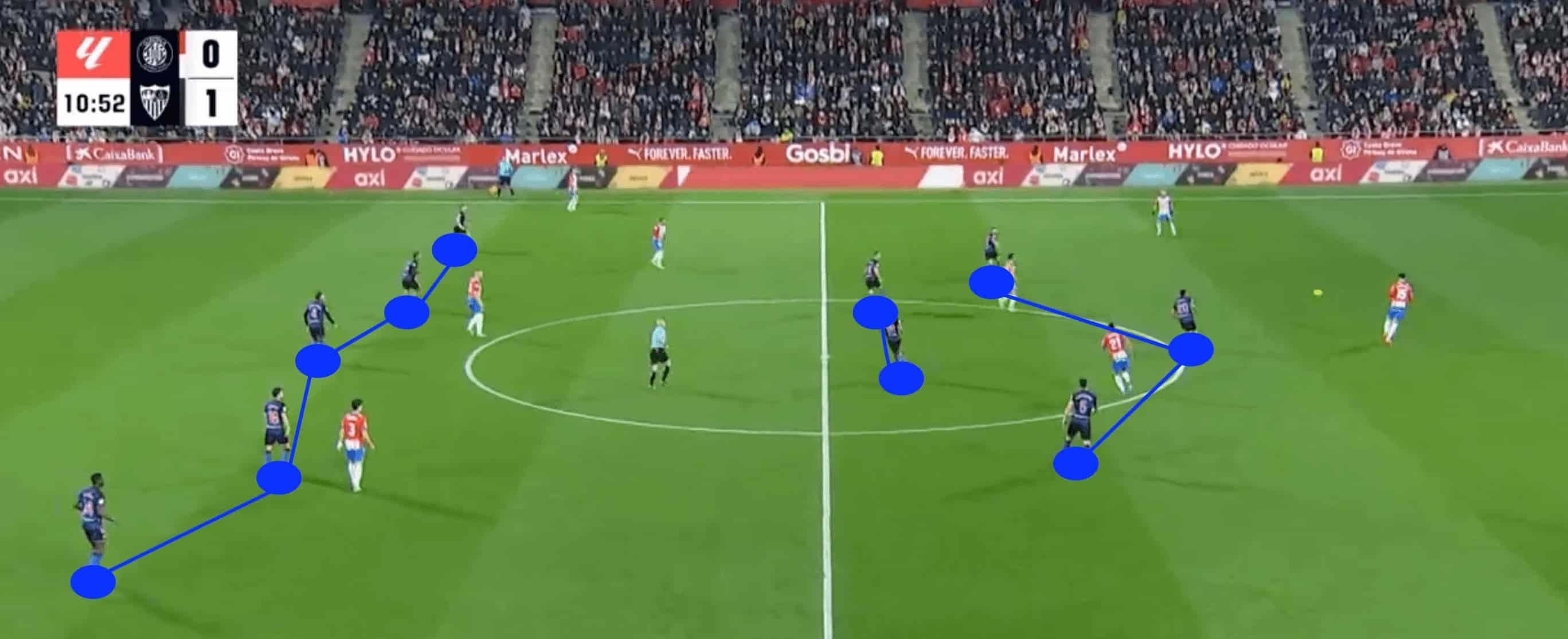
Despite the added support from a deeper-lying single pivot often deputising in defence, Sevilla has still been vulnerable at the back. As shown in their match against Atletico Madrid, Ramos jumps out to press Rodrigo De Paul, but the poor positioning from Gudelj creates an imbalance with only three players in the defensive line.
Álvaro Morata can break in behind the defensive line unmarked and have a crucial opportunity to give his side the lead- incredibly damaging in the early stages of the match. With Gudelj being a defensive understudy having played mainly as a defensive midfielder, it begins to question the standard of Sevilla’s central defenders and their persistence to play with five in defence.
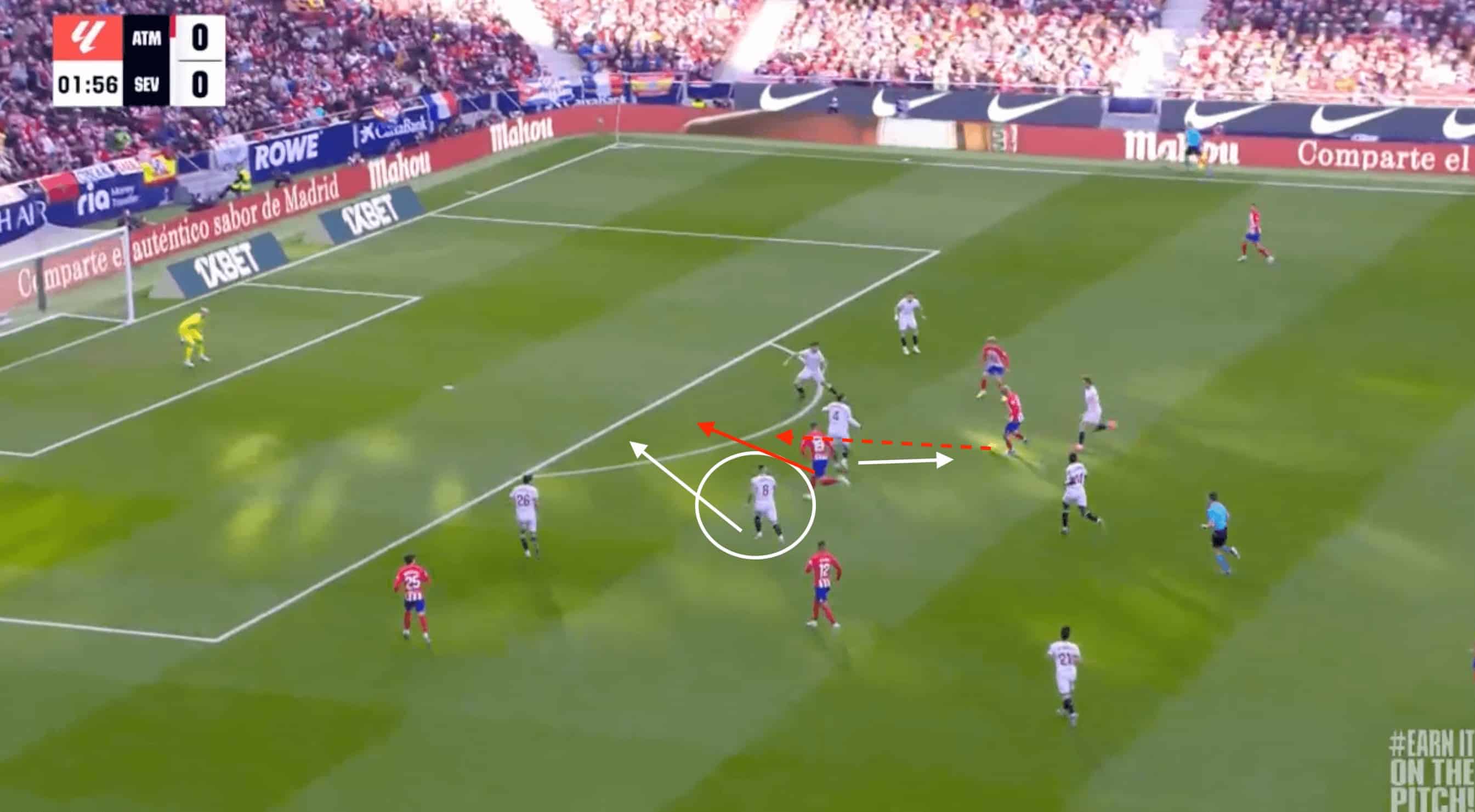
Wing-back woes
Even though their flanks have been a point of emphasis within the attacking phase, it can also prove to be a concerning feature of their defensive shape. As shown in the first image below, Jesús Navas reacts well to jump out and press the opposing winger, suiting his side’s desire to force the opponents wide through their pressing efforts.
Even though we see a player vacate the defensive line momentarily, there is adequate cover from the resulting four-man line who can slide across and negate the openings. This can often be executed well when supported by the wide midfielders in a 5-4-1 shape, compressing the space afforded to the opponent, resulting in avoidable mistakes and turnovers.
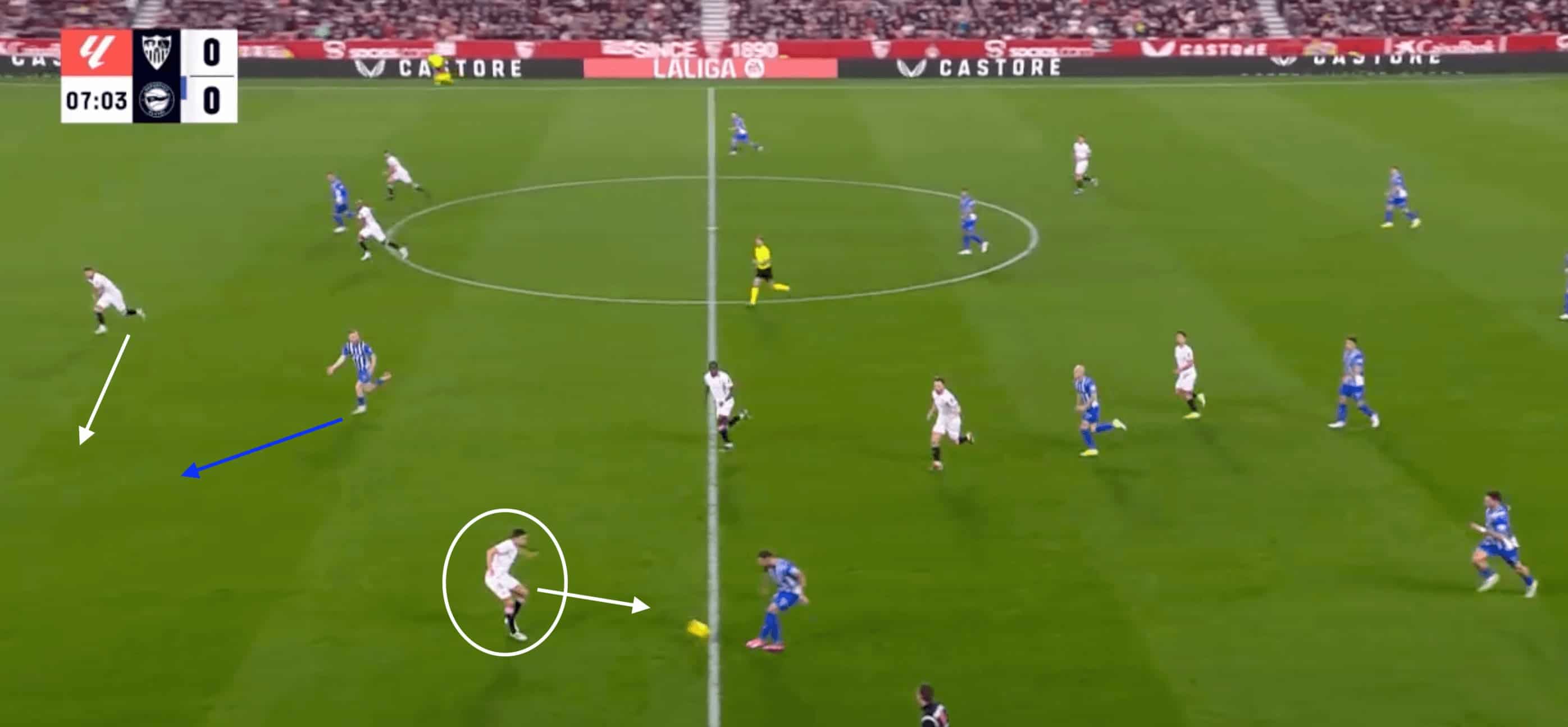
When the communication between defenders is poor, this system has its glaring flaws. In Sevilla’s most recent match against Girona, Navas is caught centrally, with Ocampos unable to close down the pass into Savio out wide. As a result of Nianzou’s failure to cover the wider area, Sávio was able to use his speed and technical ability to penetrate the box and assist Dovbyk for the equaliser.
A great start against a title favourite was undone due to their openness and Girona exploiting their defensive openings, ultimately resulting in a 5-1 defeat. Whilst the additional support in the 5-4-1 can be seen as a benefit in widening the defensive line, it continues to undermine their ability to be effective in transition when winning the ball deep. Their ability to translate quick turnovers into meaningful attacking threats has been notably poor, with only 24 direct attacks this season.
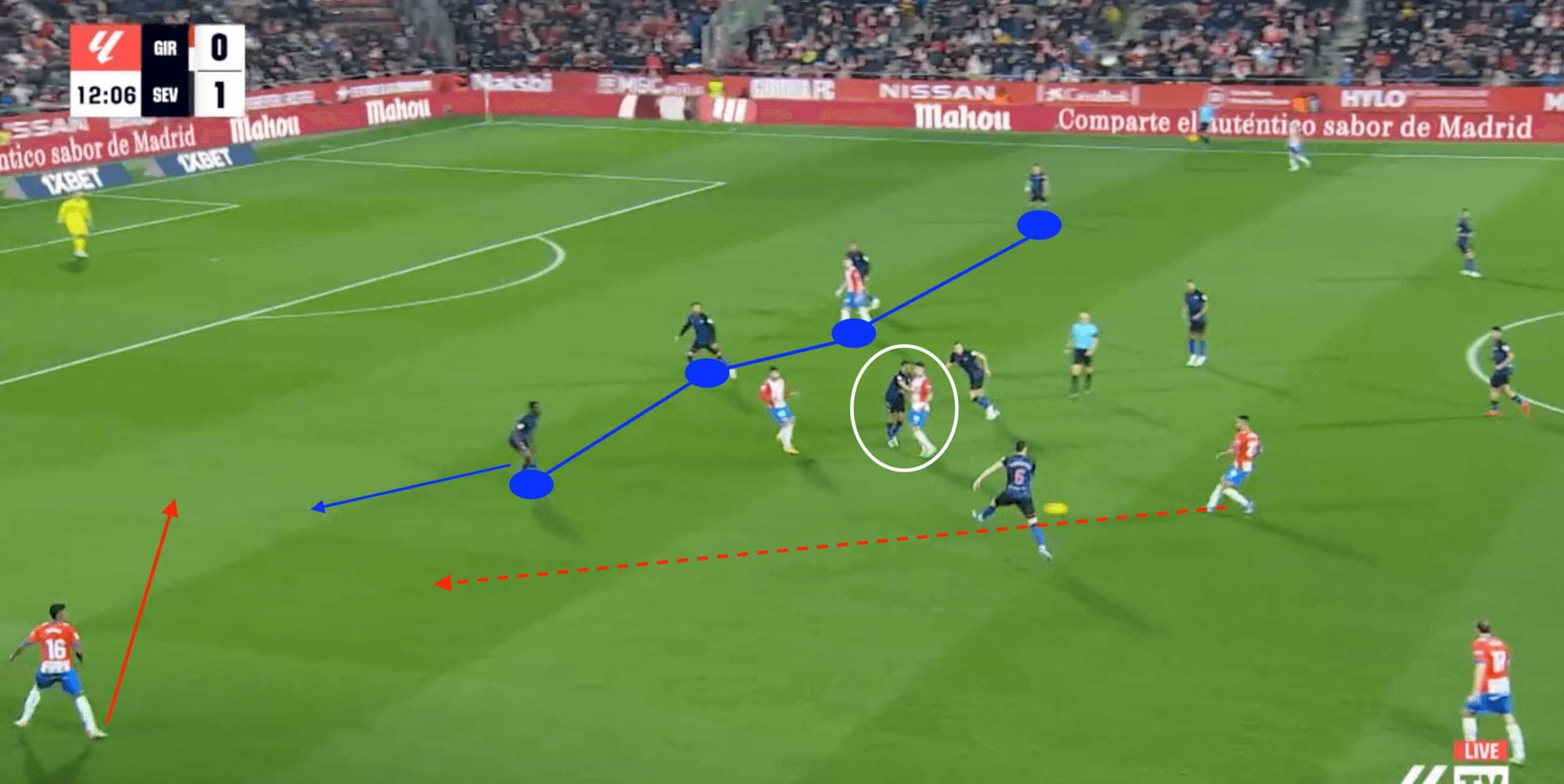
A threat on the flanks
For all their criticism this season, there are elements to the Sevilla side which can be harnessed in order to get them back on track. Despite the occurrence of them being exploited in transition, the height of the wing-backs is invaluable to the attacking threat of Sevilla, as they look to bypass opposing defensive lines by playing around them.
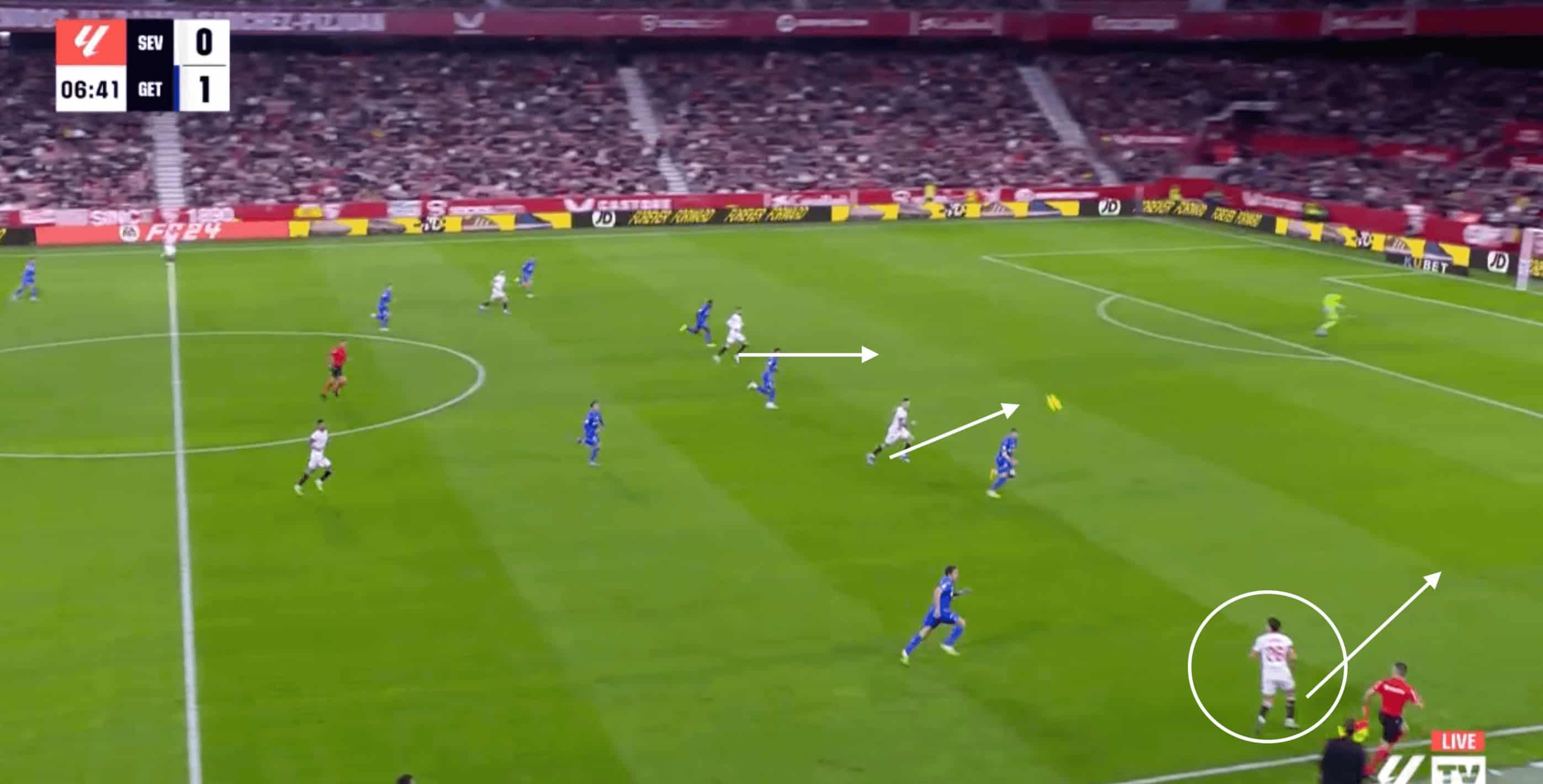
With only 23% of Sevilla’s attacking moves progressing through the central channel this season, Sanchez Flores has also looked to stretch defences to create more space centrally. The deployment of Rakitić and Suso as advanced number 8s naturally draws defensive attention due to their creative talents, therefore creating space for the Pedrosa and Sánchez/Navas to overlap. They can also operate in the half-spaces, anticipating the attacking movement of the strikers and looking to produce killer direct passes to feet. Their intentions are clear with a LaLiga high of 98 penalty area crosses this season, which presents itself as an excellent strategy to enhance and look to provide more wins in the future.
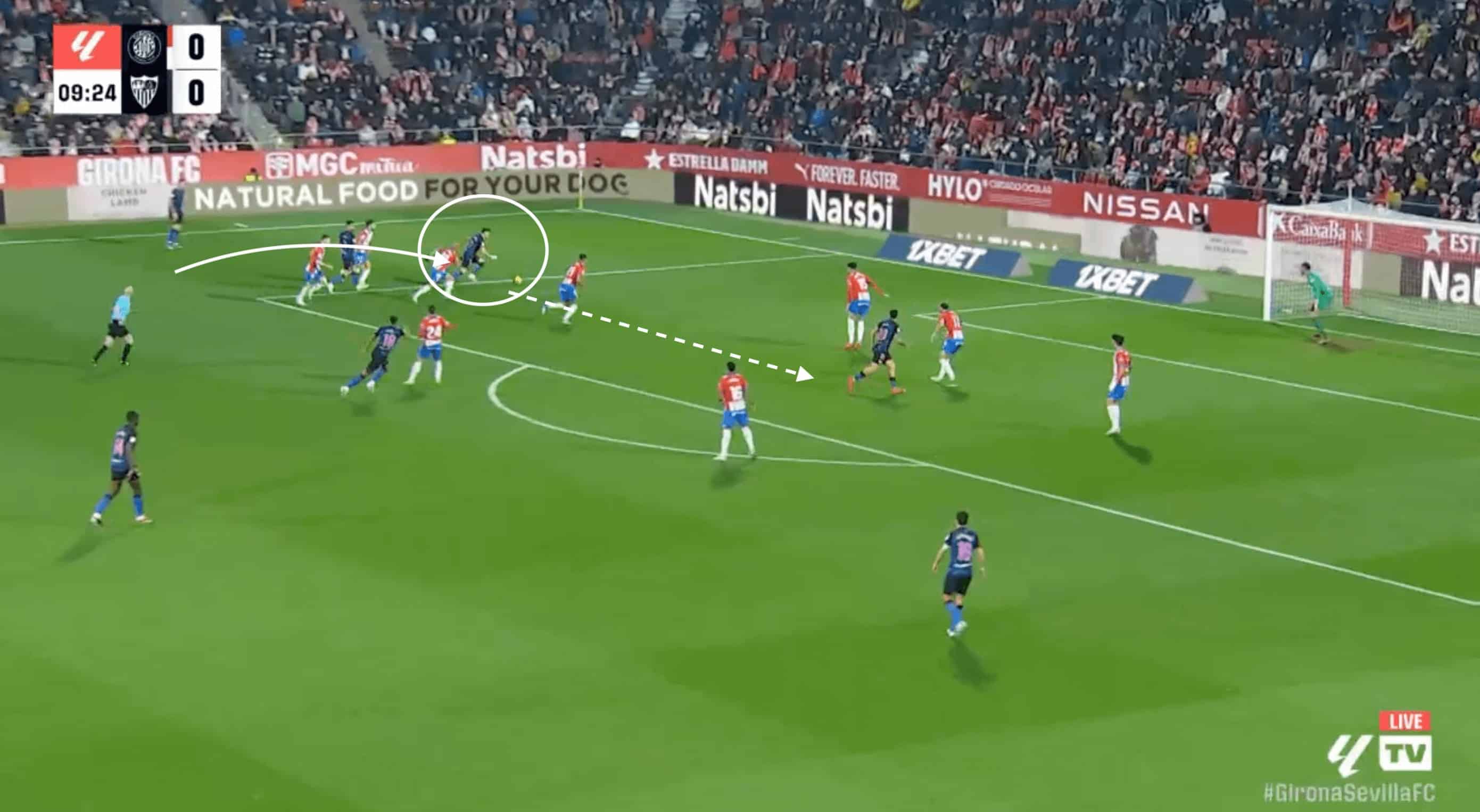
A mystery in finishing
When highlighting their offensive underlying stats, it can be hard to comprehend how Sevilla has only got an expected goal difference of -0.41 per 90 and have struggled to consistently find the net. Having recorded in the top five for progressive passes (936), passes into the final third (192) and key passes (233), it would bode the question as to why they have been so ineffective in front of goal. The absence of top goal-scorer Youssef En-Nesyri at AFCON with Morocco has certainly been a killer, with youthful Isaac Romero coming in to replicate his experienced counterpart.
In recent matches, Romero has been incredibly isolated when tasked with operating as the lone outlet striker in the 5-4-1. The lack of offensive support allows the forward to be ‘swallowed up’, with tighter marking and defensive personnel able to nullify any passes received from the midfield. With more cutting edge in the final third, Sanchez Flores has a positive platform to build upon when given the full capabilities of his attacking arsenal.

Conclusion
To conclude, it would appear that the direction Sevilla has been heading over the past few years may not be as alarming as once perceived when accounting for their decision-making both on and off the pitch. With heavy rotation in both playing personnel and those conducting business at the very top, Sevilla is a club which has certainly lacked stability. A desire to persist with ageing talents has displayed a lack of anticipation for the future, consequently providing detrimental effects on the pitch.
However, this January has been a step in the right direction with acquiring youthful and emerging talents to excite fans and inject life into the club. The double swoop for Mateo Mejía and Hannibal Mejbri is a step in the right direction- but will they be able to impact the results as soon as desperately needed? A positive outlook for Sevilla fans would be that their quality on the pitch exceeds that of those currently in the bottom three in LaLiga, but they must right their wrongs if they want to return back towards the top of the division in years to come.

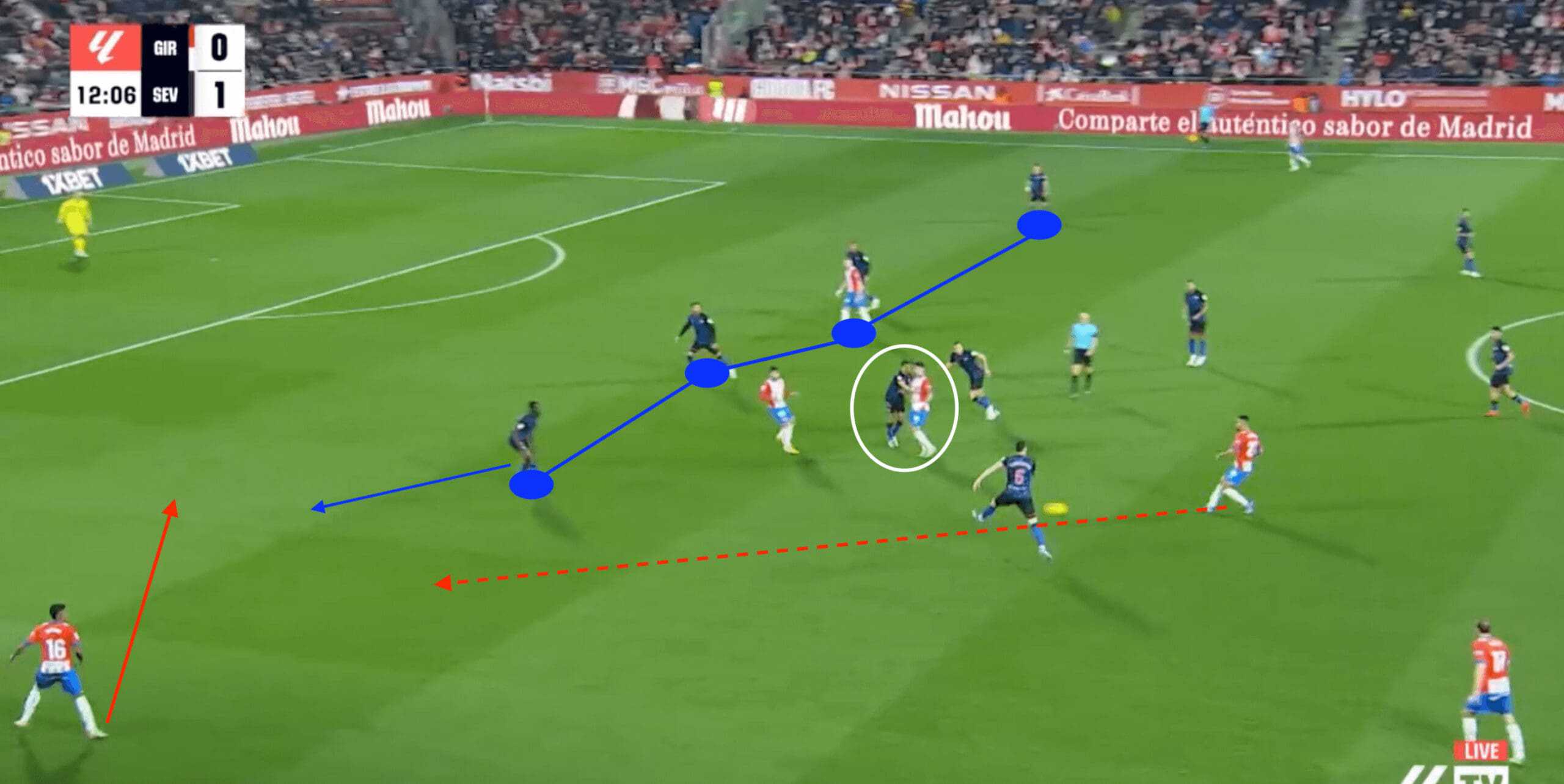



Comments